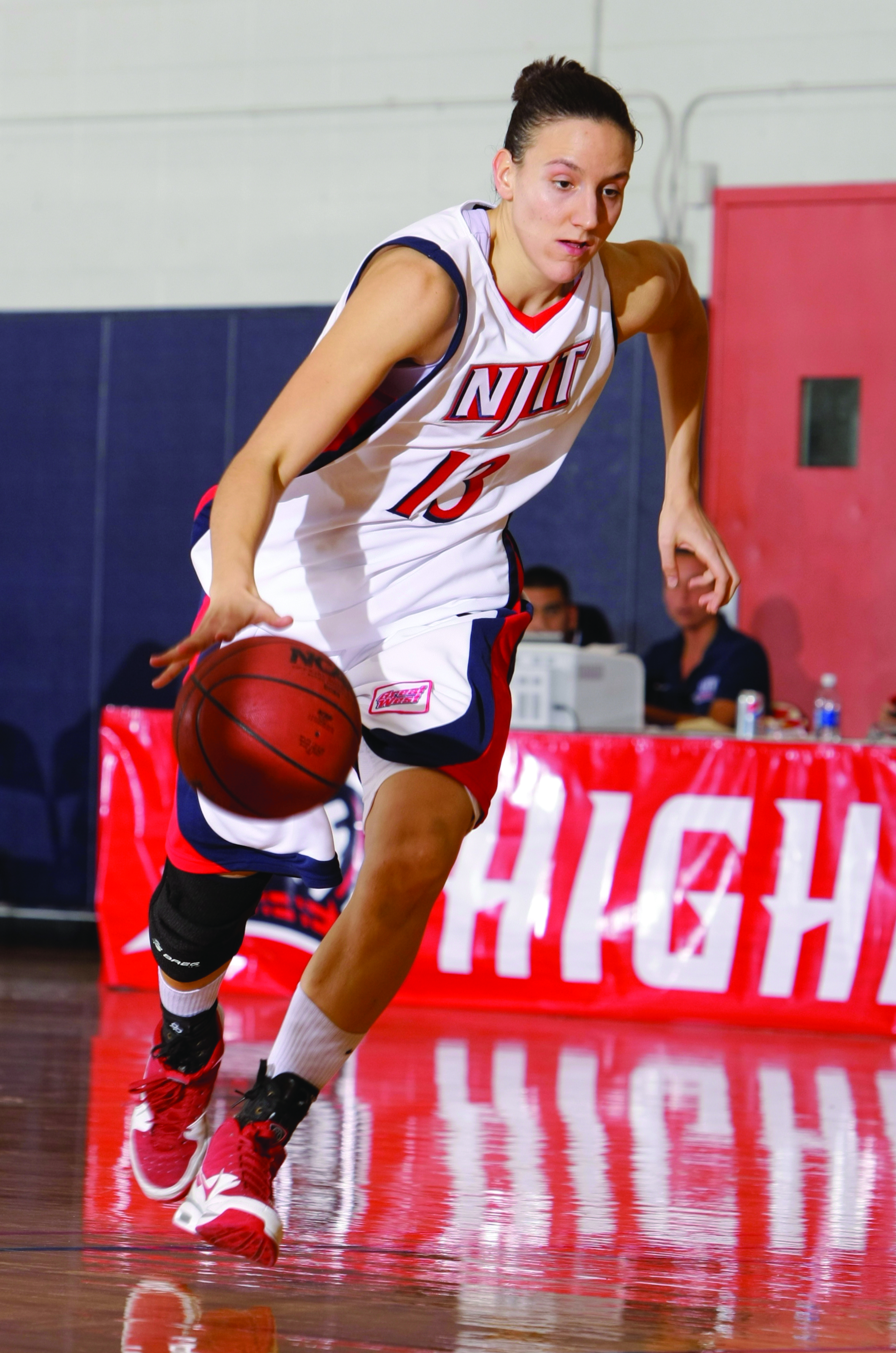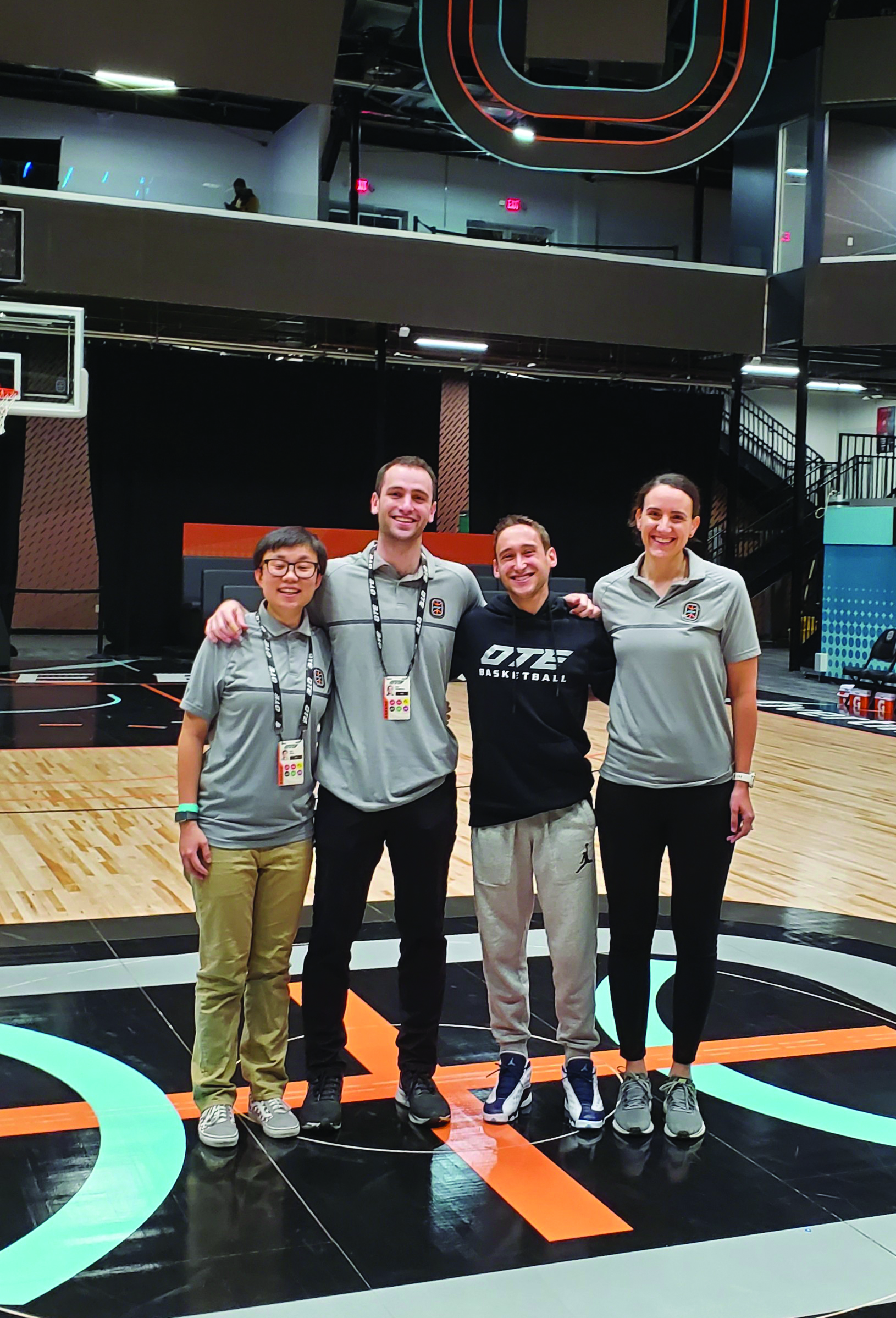Math and Basketball: Landing My Dream Job as a Data Scientist
I’ve loved both basketball and mathematics ever since I was a child. I grew up in Split, Croatia — a city with a long and rich basketball tradition. Basketball has been part of my family long before I was born; my father played when he was young and my older brothers started playing at an early age. After witnessing a few of their practices and trying the sport myself, all I wanted was to become a professional basketball player.
When I was 12 years old, I watched a National Collegiate Athletic Association (NCAA) women’s basketball game for the first time. Tamika Catchings of the University of Tennessee instantly became my favorite player, and I was enthralled with the fans’ energy and excitement in the arena. From that day on, my dream was to study and play basketball in the U.S. However, I knew that I needed to earn an athletic scholarship in order to do so.
Off the court, mathematics was always my favorite subject in school. I appreciated the logic and sets of relevant rules, but also the creativity that is necessary to follow the rules, stay within their boundaries, and still find a path to a solution. Another reason why I liked mathematics in elementary school was because once I understood the concept, I didn’t need to study anymore; this meant that I had more time for basketball.

When it came time to choose a high school, I had two options: a less demanding school that would allow extra time for basketball or a more challenging, math-focused one that would better prepare me for college. I chose the school with the advanced math and science program, which meant that I had to limit the amount of time that I spent on basketball practice every day. Nevertheless, I never missed a practice and studied whenever I could. One year later, I moved to Požega to play with their team in the top Croatian league and transferred to another high school with a demanding math and science program. I did not want to have to focus on just basketball or mathematics.
My dream of attending college in the U.S. became a reality by pure coincidence. Living in Croatia, I didn’t know any college coaches in the U.S. and wasn’t even sure how the teams recruited their players. By the time I sent a DVD of one of my games, most coaches had already filled their roster spots. I thus began working on an alternative plan to study and play basketball in Croatia. But in early July, I received an email from a family friend with a valuable connection. This friend knew someone from New York who in turn knew a coach who was looking to recruit additional players — Margaret McKeon, who had just become the head coach of the women’s basketball team at the New Jersey Institute of Technology (NJIT). I sent her a recording of a game and she offered me a full scholarship. In a way, I was lucky that my previous contacts were unsuccessful. NJIT made it possible for me to study math and play basketball, both at a very high level; NJIT has a strong applied mathematics program and its athletic program had recently transitioned to NCAA Division 1.
Throughout most of my undergraduate education, I intended to play professional basketball and then become a math teacher once my athletic career was done. However, several injuries hindered my success on the basketball court. I was also becoming increasingly aware of the unlikelihood of pursuing professional women’s basketball, simply because the opportunities to play at a high level and make a living are so scarce. I ultimately began to turn to my math career much sooner than I had originally hoped. During my senior year at NJIT, one of my professors—Eliza Michalopoulou—suggested that I take a few graduate courses in place of my electives; these courses would also count towards my degree requirement if I opted to stay at NJIT for graduate school. At the same time, I was taking a capstone class that introduced me to academic research. I started to think that a research career might be fun.
Inspired by conversations with multiple NJIT professors, I decided to apply for NJIT’s Ph.D. program after my senior-year basketball season. At the time, Shahriar Afkhami and Lou Kondic—who became my thesis advisors—were working on fluid dynamics research that involved modeling, computation, and collaboration with experimentalists from other universities. For the first time since I started learning math and playing basketball, I left one and focused all of my energy on the other. However, I did play recreational basketball during the first three years of graduate school.
While working on my thesis in computational fluid dynamics (CFD), I began to research possible job prospects upon graduation. I found that National Basketball Association (NBA) teams were hiring data scientists to work with their basketball operations departments and use data to devise game-day strategies. Unfortunately, I wasn’t studying data science. Shortly thereafter, I stumbled upon Coursera: free university courses that anyone can take online. I promptly enrolled and started to explore data science. Luckily, CFD provided me with most of the necessary skills for the subject; I already knew how to write code, process large data files and extract summary information, and create visualizations from data. I was then able to expand my machine learning knowledge via additional online courses. Although I knew that securing a job in the NBA was a very long shot, I figured that learning data science would be helpful regardless.

I began to apply for data science jobs with different NBA teams during my last year of graduate school. At the same time, I was also applying for postdoctoral openings, teaching positions, and other data science gigs in industry. Despite keeping all of my options open, I had no responses for months. Suddenly—right before my thesis defense—I received three offers in one week, including one from the Philadelphia 76ers. Here was a chance to have both math and basketball in my life again! Accepting the position was an easy decision.
Although the data evolution in U.S. sports commenced with baseball, NBA teams began to invest in the procurement of more game data in the mid-2000s. They collaborated with third-party providers to obtain player tracking data — coordinates of players and the ball in 25 frames per second. In 2013, the NBA decided to formally contract with the providers to attain data for all games. Suddenly, basketball went from about 400 rows of data per game from box score and play-by-play to roughly one million rows of data per game from player tracking.
During my four years with the Philadelphia 76ers, my research and development team consisted of mathematicians, software developers, and computer scientists. We worked on collaborative projects that provided data-driven information to the front office staff: the general manager and executive team, performance science team, medical team, and coaches. Our work consisted of quick analyses, long-term research projects, and general software development. I utilized various skills from my mathematics education, including modeling of physical systems (e.g., shot trajectories and the motion of players on the court), statistical modeling (e.g., regression and random forests), programming (e.g., Python, HTML, and CSS), and data visualization. In addition, writing scientific papers during graduate school prepared me to generate data-driven reports.
Last year, I joined Overtime Elite (OTE) — a transformative new sports league that offers the world’s most talented young basketball players a better pathway towards becoming professional athletes. We are currently in our first season and have just built a new 103,000-square-foot state-of-the-art facility that includes two NBA-sized practice courts, a separate court for games, classrooms for the school, a full-size weight room, a training room, and offices for all employees. I lead the OTE’s Strategy and Research group, which supports the Basketball Operations group in all data-related tasks. Joining the league at its onset allowed me to be involved in many projects that are already completed in the NBA. Some of these projects include determining the sports technology companies with which to partner, partaking in discussions about game rules and schedules, building balanced rosters, deciding which data to share with NBA scouts, and so forth. Joining a new league and leaving a well-established organization like the NBA was risky, but the experience I have gained thus far has been well worth the risk.
As a lifelong athlete, working in sports is truly a dream come true for me. As a mathematician, I’m thankful for the chance to show the world that math is cool. One of the biggest changes I noticed when I started working in professional basketball was people’s reactions when they asked about my job. When I was a graduate student, individuals frequently told me that they hated math. Now they are amazed that I have such a “cool” job. I see this response as a benefit of my career; I can use it to change people’s minds about mathematics and introduce them to its many exciting real-world applications.
About the Author
Ivana Šerić
Strategy and Research Team Lead, Overtime Elite
Ivana Šerić currently leads the Strategy and Research team at Overtime Elite. She received her B.S. and Ph.D. degrees from the New Jersey Institute of Technology, where she was a four-year starter for the women’s basketball team during her undergraduate years.
Stay Up-to-Date with Email Alerts
Sign up for our monthly newsletter and emails about other topics of your choosing.



